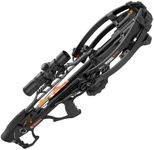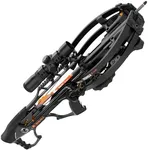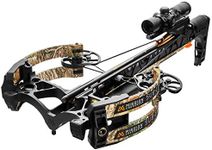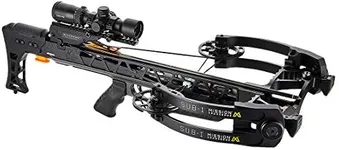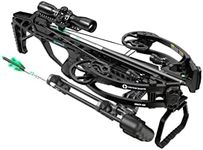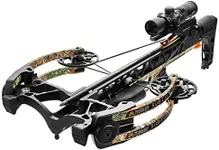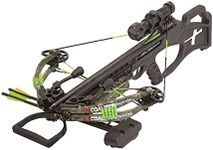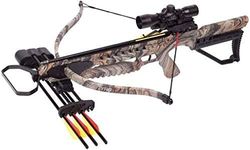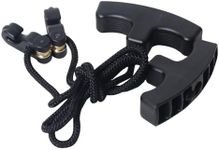Buying Guide for the Best Cross Bows
Choosing the right crossbow can be a rewarding experience, whether you're a seasoned hunter, a target shooter, or a beginner looking to get into the sport. The key to finding the best crossbow for you is understanding the various specifications and how they align with your needs and preferences. By focusing on the key specs, you can make an informed decision that ensures you get the most out of your crossbow experience.Draw WeightDraw weight refers to the amount of force required to pull the crossbow string back into the cocked position. This spec is important because it affects the power and speed of the arrow. Draw weights can range from around 75 pounds to over 200 pounds. For beginners or those with less upper body strength, a lower draw weight (75-125 pounds) is easier to manage and still effective for target shooting and small game hunting. Intermediate users might prefer a mid-range draw weight (125-175 pounds) for a balance of power and ease of use. Experienced hunters often opt for higher draw weights (175+ pounds) for maximum power and speed, which is ideal for larger game.
Arrow SpeedArrow speed, measured in feet per second (FPS), indicates how fast the arrow travels once released. This spec is crucial for determining the crossbow's effectiveness in hunting and target shooting. Speeds can range from 200 FPS to over 400 FPS. For target shooting and small game hunting, a speed of 200-300 FPS is usually sufficient. For medium to large game hunting, a speed of 300-400 FPS provides better penetration and accuracy. For those seeking the highest performance, speeds over 400 FPS offer the best results but may require more skill to handle effectively.
WeightThe weight of the crossbow itself is an important factor for comfort and maneuverability. Crossbows can weigh anywhere from 5 to 10 pounds or more. Lighter crossbows (5-7 pounds) are easier to carry and handle, making them ideal for beginners or those who plan to move around a lot while hunting. Mid-weight crossbows (7-9 pounds) offer a good balance between stability and portability, suitable for most users. Heavier crossbows (9+ pounds) provide more stability and can absorb more recoil, which is beneficial for experienced users who prioritize accuracy over portability.
Power StrokeThe power stroke is the distance the string travels from its cocked position to its resting position. This spec affects the speed and power of the arrow. Power strokes typically range from 10 to 20 inches. Shorter power strokes (10-13 inches) are easier to cock and handle, making them suitable for beginners and those with less strength. Medium power strokes (13-16 inches) offer a good balance of power and ease of use, ideal for intermediate users. Longer power strokes (16-20 inches) provide maximum power and speed, preferred by experienced hunters looking for the best performance.
Noise LevelThe noise level of a crossbow is an important consideration, especially for hunters who need to remain stealthy. Crossbows can vary in how much noise they produce when fired. Quieter crossbows are beneficial for hunting, as they are less likely to startle game. Noise reduction features, such as dampeners and silencers, can help minimize sound. If stealth is a priority, look for crossbows with built-in noise reduction features or consider adding aftermarket accessories to reduce noise.
ScopeThe scope on a crossbow helps with aiming and accuracy. Scopes can range from simple red dot sights to more advanced optical scopes with magnification. For beginners, a basic red dot sight is easy to use and sufficient for short-range shooting. Intermediate users might prefer a scope with some magnification (2x-4x) for better accuracy at medium ranges. Experienced users often opt for high-quality scopes with greater magnification (4x-6x or more) and additional features like illuminated reticles for precise long-range shooting.
